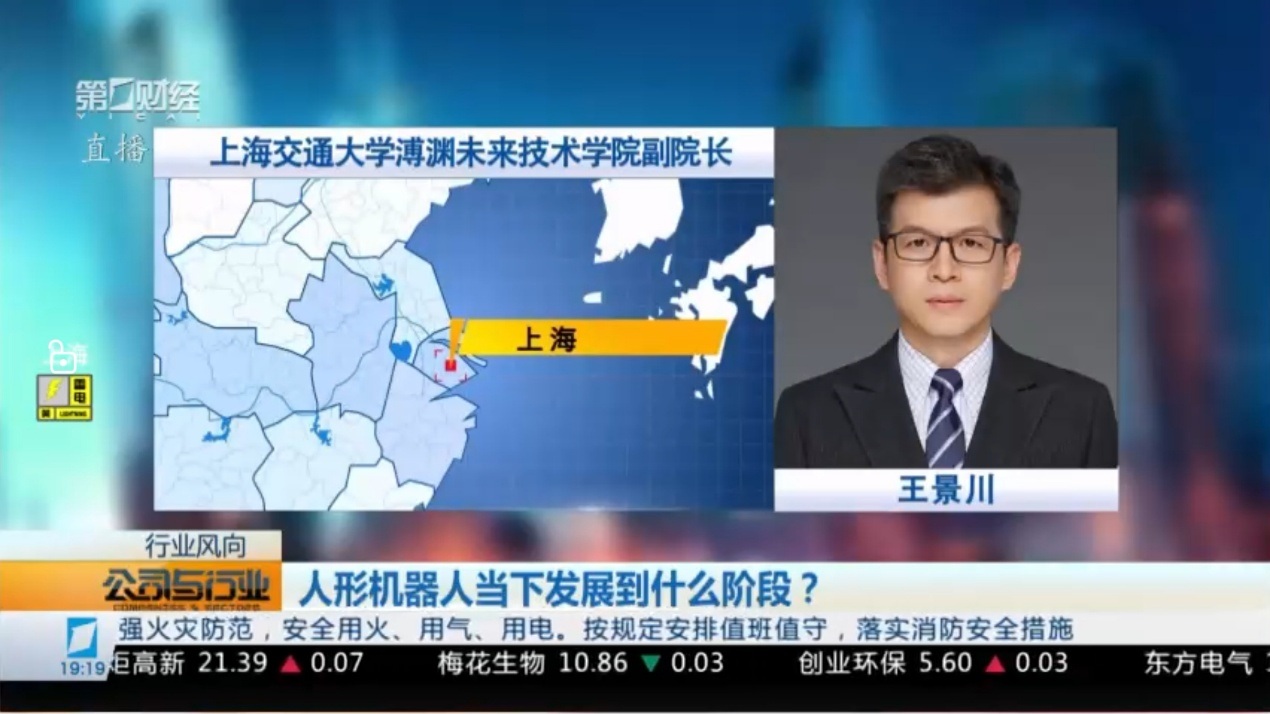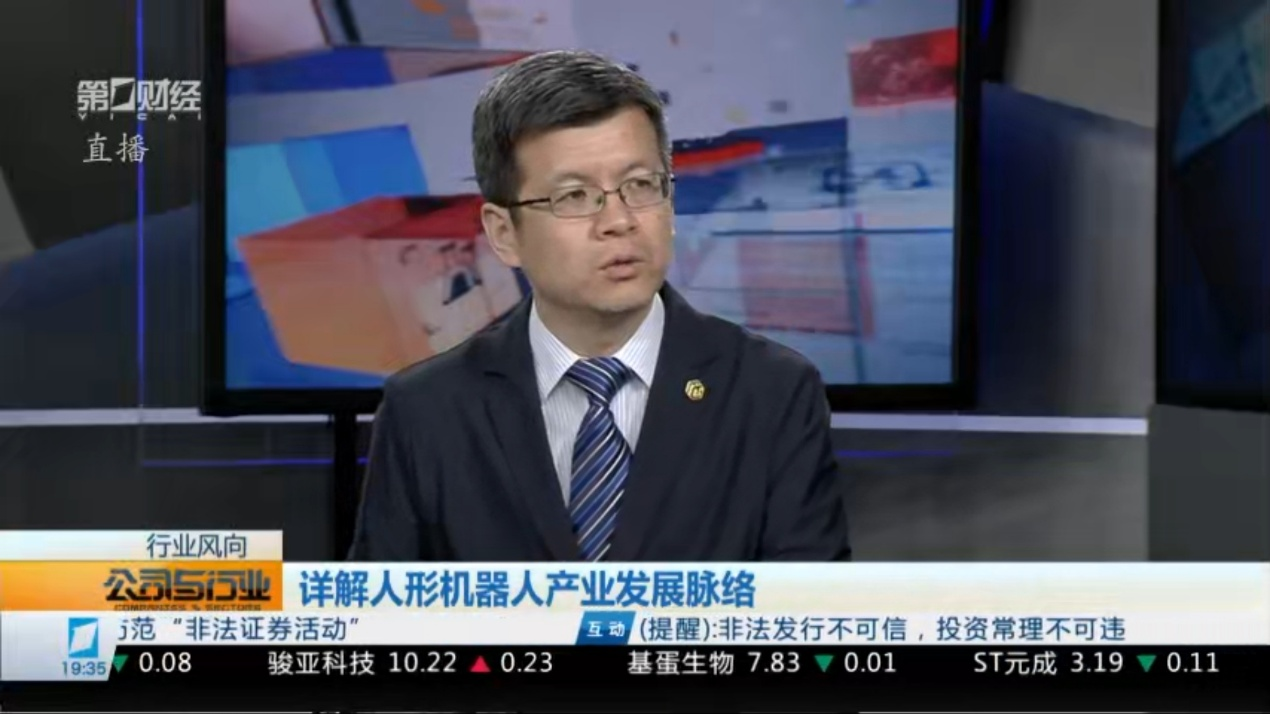Interview with Wang Jingchuan, Vice Dean of GIFT: Humanoid Robot Technology and Industrial Development
On April 21 and 28, Wang Jingchuan, vice dean of Global Institute of Future Technology, SJTU, was invited to participate in a telephone and live interview of the First Financial Channel respectively. During these discussions, he delved into various issues related to humanoid robot related issues.

In the interview, Wang Jingchuan begins with elaborating the necessity for developing humanoid robots. He noted that most of the environments we live in and the tools we use are designed with human ergonomics in mind, and that humanoid robots can easily adapt to these settings and become skilled at using tools we created. This ability to fit naturally into our world makes humanoid robots very promising for future applications. However, although humanoid robotics is currently in a phase of rapid development, its industry is still exploring suitable landing and breakthrough points for large-scale commercialization.
When asked why robots should be allowed to participate in sports such as marathons, Wang Jingchuan said it would be beneficial to promote the rapid iteration of robotics. By engaging in motion, robots can adapt better to complex scenarios and enhance their ability to deal with uncertainty. This skill is essential for their use in a variety of scenarios in the future, enabling them to tackle different challenges more successfully.

In terms of key components, Wang Jingchuan pointed out that humanoid robots are in urgent need of upgrading and breakthroughs in components, including high-efficiency motors and other key transmission components, as well as body parts made of composite materials. The performance of these parts directly determines the movement ability and flexibility of humanoid robots, and therefore becomes the key direction of the current technology research.

Looking ahead to the future commercialization of humanoid robots, Wang Jingchuan believes that, although a clear landing scene has not yet been found in the general field, the advantages of humanoid robots will be fully realized in some specific situations. For example, in dangerous or specialized scenarios such as space stations and nuclear power plants, robots with flexible operating capabilities and complex task handling abilities are needed to replace humans in high-risk work. The rapid development of artificial intelligence is laying the groundwork for humanoid robots to enhance their perception, as well as planning and control capabilities, which helps them perform these specific tasks more effectively.




